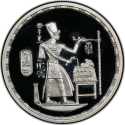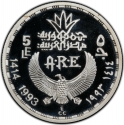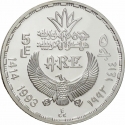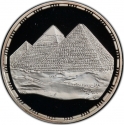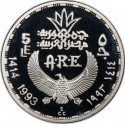You are about to finish your registration. Please check your mailbox (including spam folder). There should be a letter with a confirmation link. Check setting to make sure that your e-mail address is correct.
Send letter againDescription
Khonsu is the ancient Egyptian god of the Moon. His name means "traveller", and this may relate to the perceived nightly travel of the Moon across the sky. Along with Thoth he marked the passage of time. Khonsu was instrumental in the creation of new life in all living creatures. At Thebes he formed part of a family triad (the "Theban Triad") with Mut as his mother and Amun his father.
Khonsu's name reflects the fact that the Moon (referred to as Iah in Egyptian) travels across the night sky, for it means "traveller," and he also had the titles "Embracer," "Pathfinder," and "Defender," as he was thought to watch over those who travel at night. As the god of light in the night, Khonsu was invoked to protect against wild animals, and aid with healing. It was said that when Khonsu caused the crescent moon to shine, women conceived, cattle became fertile, and all nostrils and every throat was filled with fresh air.
Obverse

|
Depicts a statue of Tutankhamun depicted as Khonsu. The Boy King wears the sidelock braid of youth and is holding a crook, flail and djed pillar. |
|---|---|
Reverse

|
Stylized state name (Arab Republic of Egypt) divides denomination in Arabic and English and abbreviation of state name (A.R.E.) below, the date in Arabic (Hijri) and Western (Georgian) divides by a vulture with open wings. Engraver's initials (ECC) below. 5 ٥ جمهورية مصر العربية |
| Edge |


